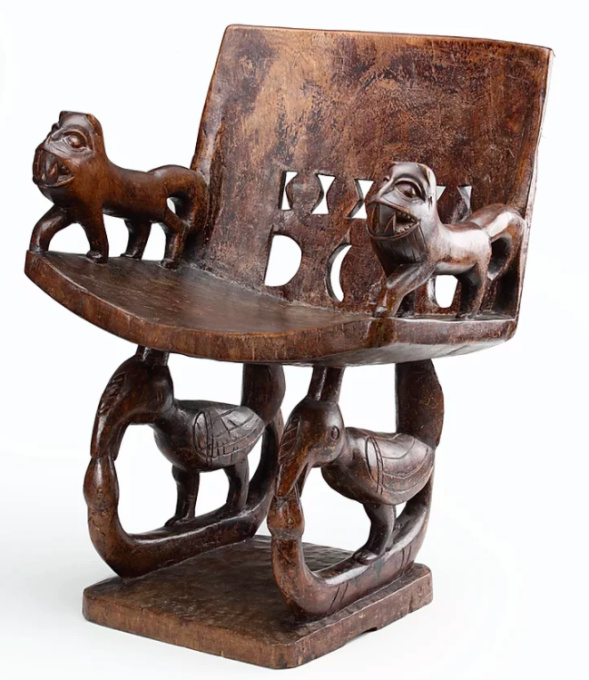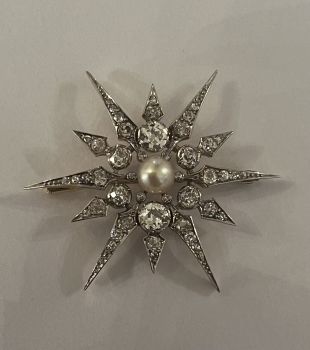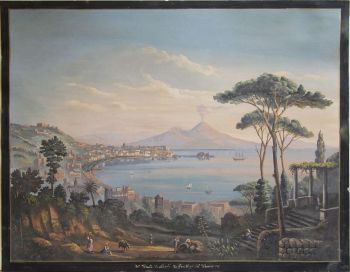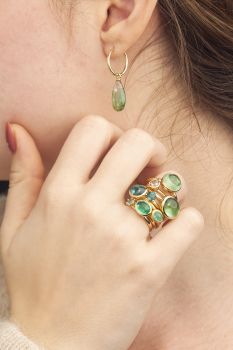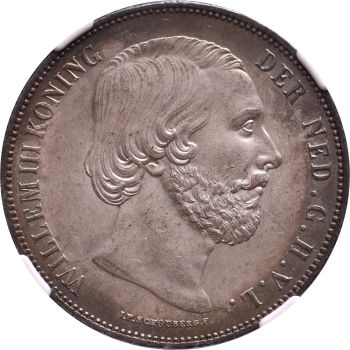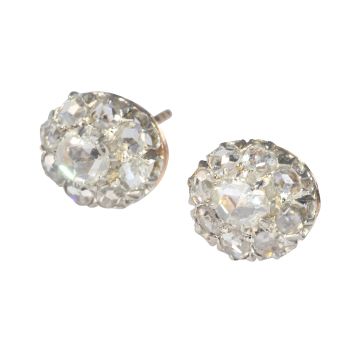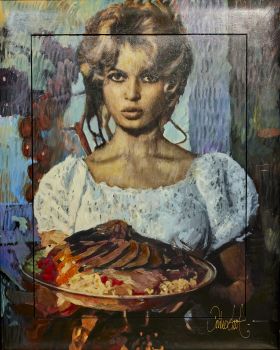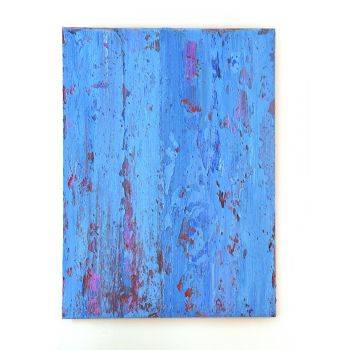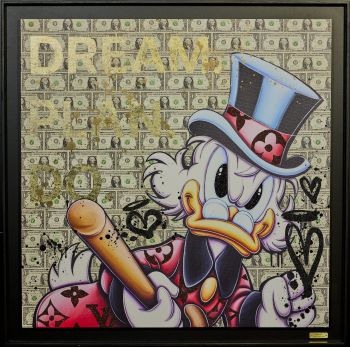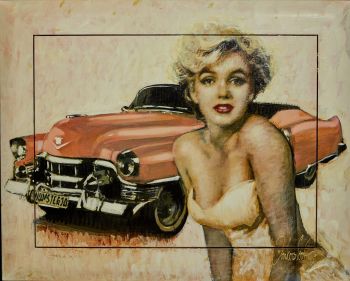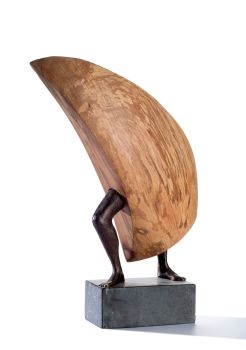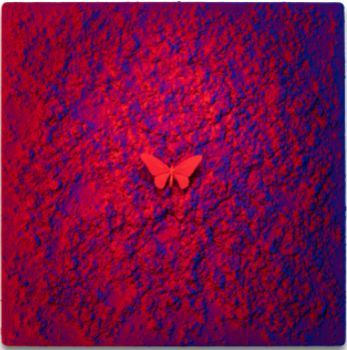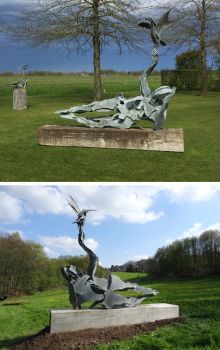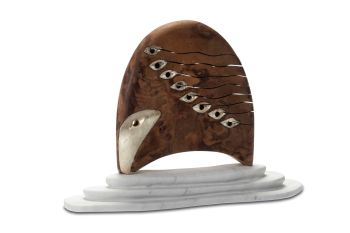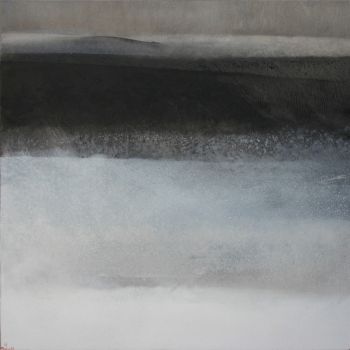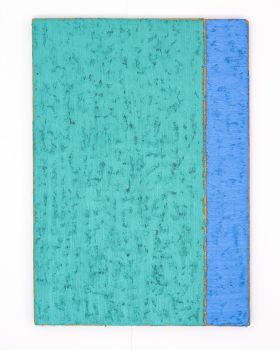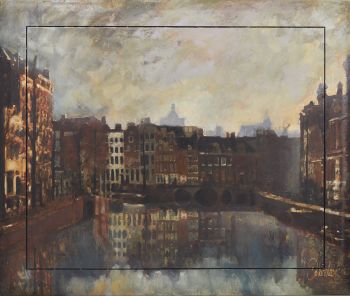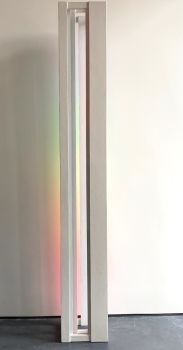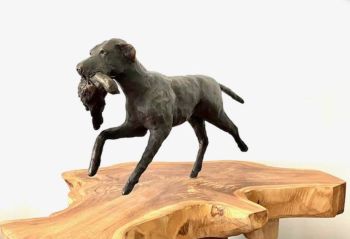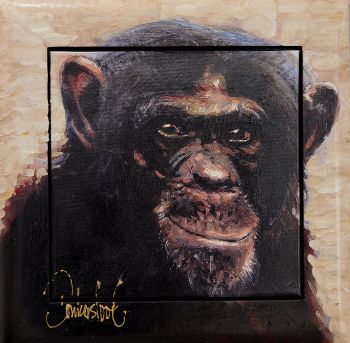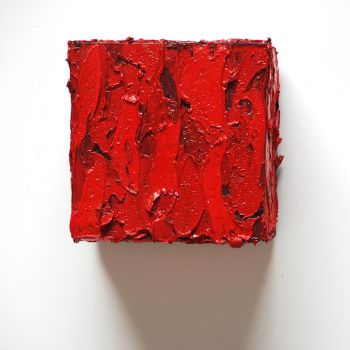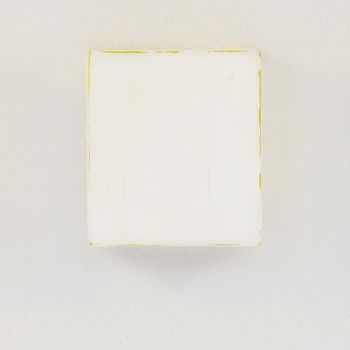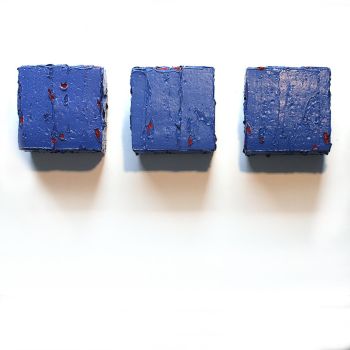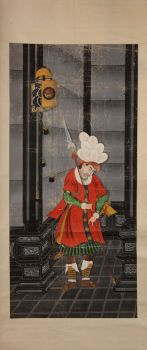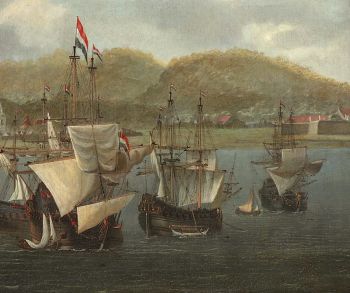UNA 'POLTRONA DI PRESTIGIO' DEL REGNO DEL BENIN 1875 - 1925
Artista Sconosciuto
Legna
Attualmente non disponibile tramite Gallerease
Zebregs & Röell - Fine Art - Antiques
- A proposito di opere d'arteA KINGDOM OF BENIN 'PRESTIGE CHAIR'
Late 19th/early 20th century
On square base, each foot in the shape of a bird eating a snake, the arm-rests in the form of leopards, the back open-worked.
Overall a nice dark patina.
H. 71 x W. 55.5 x D. 51 cm
Provenance:
Jonathan Hope, bought the chair in the 1980s from John Hewettin the Grosvenor House Antique Fair.
Note:
The leopards as armrests are classical royal Benin style. Benin kings are often referred to as “leopards of the house”. The supports in the form of powerful birds with snakes in their beaks derive from symbols of kingship.
In an engraving of the royal palace in Benin City published in 1668 in Olfert Dapper’s book “Naukeurige Beschrijvinge der Afrikaansche Gewesten”, enormous metal birds with outstretched wings poised on the main turrets of the palace and giant brass serpents zigzagging down the turrets, are shown.
John Hewett was an influential dealer in primitive art and antiques from the late 1940s to the time of his death in the late 1980s. He had two galleries in London and sold many antiquities to the Burrell Collection in Glasgow, to Sir Robert Sainsbury and many other distinguished collectors such as George Ortiz. There is a chapter about John Hewett in Hermione Waterfield’s book “Provenance”. - A proposito di opere artista
Può succedere che un artista o un creatore sia sconosciuto.
Alcune opere non sono determinate da chi sono state realizzate o sono state realizzate da (un gruppo di) artigiani. Esempi sono statue dell'antichità, mobili, specchi o firme non chiare o leggibili ma anche alcune opere non sono affatto firmate.
Inoltre puoi trovare la seguente descrizione:
•"Attribuito a …." A loro avviso probabilmente opera dell'artista, almeno in parte
•“Studio di ….” o “Officina di” A loro avviso un'opera eseguita nello studio o nella bottega dell'artista, eventualmente sotto la sua supervisione
•“Cerchio di…” A loro avviso un'opera del periodo dell'artista che mostra la sua influenza, strettamente legata all'artista ma non necessariamente al suo allievo
•"Stile di..." o "Seguace di..." A loro avviso un'opera eseguita nello stile dell'artista ma non necessariamente da un allievo; può essere contemporaneo o quasi contemporaneo
•“Modalità di…” A loro avviso un'opera nello stile dell'artista ma di epoca successiva
•"Dopo …." A loro avviso una copia (di qualsiasi data) di un'opera dell'artista
•“Firmato…”, “Datato…” o “Iscritto” A loro avviso l'opera è stata firmata/datata/inscritta dall'artista. L'aggiunta di un punto interrogativo indica un elemento di dubbio
•"Con firma....", "Con data...", "Con iscrizione..." o “Riporta firma/data/iscrizione” a loro avviso la firma/data/iscrizione è stata aggiunta da qualcuno diverso dall'artista
Sei interessato ad acquistare questa opera d'arte?
Artwork details
Related artworks
Artista Sconosciuto
UN PICCOLO NETSUKE IN AVORIO DI UN OLANDESE CON UN TAMBURO1750 - 1800
Prezzo su richiestaZebregs & Röell - Fine Art - Antiques
1 - 4 / 12Artista Sconosciuto
UN MODELLO GIAPPONESE DI UN NORIMONO, UN PALANQUIN1650 - 1700
Prezzo su richiestaZebregs & Röell - Fine Art - Antiques
Artista Sconosciuto
UN RARO SADELI INDIANO COMPLETO DI LAVORO E SCRITTURA INTARSIATI1800 - 1850
Prezzo su richiestaZebregs & Röell - Fine Art - Antiques
Johannes La (le) Blanck
Un set di ampolle d'argento olandese a doppio uso1786
Prezzo su richiestaJacob J. Roosjen SRI
Artista Sconosciuto
UN NETSUKE IN AVORIO DI UN OLANDESE CHE TIENE UN GALLETTO18th century
Prezzo su richiestaZebregs & Röell - Fine Art - Antiques
Artista Sconosciuto
UN PICCOLO NETSUKE IN AVORIO DI UN OLANDESE CON UN TAMBURO1750 - 1800
Prezzo su richiestaZebregs & Röell - Fine Art - Antiques
Artista Sconosciuto
UN NETSUKE MARINO IN AVORIO DI UN OLANDESE CHE TIENE UN FAN . CINESE18th century
Prezzo su richiestaZebregs & Röell - Fine Art - Antiques
Artista Sconosciuto
The Stamford Raffles Secretaires.1800 - 1813
Prezzo su richiestaZebregs & Röell - Fine Art - Antiques
Artista Sconosciuto
UN RARO GRANDE TELESCOPIO GIAPPONESE IN PELLE LACCATA1750 - 1800
Prezzo su richiestaZebregs & Röell - Fine Art - Antiques
Artista Sconosciuto
UN NETSUKE IN AVORIO DI UN OLANDESE CHE GIOCA CON UN RAGAZZINO18th century
Prezzo su richiestaZebregs & Röell - Fine Art - Antiques
1 - 4 / 24Rene Rietmeyer
"DUSSELDORF, SEPTEMBER 2005"2005
Prezzo su richiestaEuropean Cultural Centre Collection
1 - 4 / 24Artista Sconosciuto
A Surinam-themed Amsterdam long-case clock1746 - 1756
Prezzo su richiestaZebregs & Röell - Fine Art - Antiques
 A cura di
A cura diGallerease Magazine
Shiba Kokan
Dipinto di un olandese di fantasiaearly 19th
Prezzo su richiestaZebregs & Röell - Fine Art - Antiques
 A cura di
A cura diDanny Bree
1 - 4 / 12

